#ewaste
Text
"The California state government has passed a landmark law that obligates technology companies to provide parts and manuals for repairing smartphones for seven years after their market release.
Senate Bill 244 passed 65-0 in the Assembly, and 38-0 in the Senate, and made California, the seat of so much of American technological hardware and software, the third state in the union to pass this so-called “right to repair” legislation.
On a more granular level, the bill guarantees consumers’ rights to replacement parts for three years’ time in the case of devices costing between $50 and $99, and seven years in the case of devices costing more than $100, with the bill retroactively affecting devices made and sold in 2021.
Similar laws have been passed in Minnesota and New York, but none with such a long-term period as California.
“Accessible, affordable, widely available repair benefits everyone,” said Kyle Wiens, the CEO of advocacy group iFixit, in a statement. “We’re especially thrilled to see this bill pass in the state where iFixit is headquartered, which also happens to be Big Tech’s backyard. Since Right to Repair can pass here, expect it to be on its way to a backyard near you.” ...
One of the reasons Wiens is cheering this on is because large manufacturers, from John Deere to Apple, have previously lobbied heavily against right-to-repair legislation for two reasons. One, it allows them to corner the repair and maintenance markets, and two, it [allegedly] protects their intellectual property and trade secrets from knock-offs or competition.
However, a byproduct of the difficulty of repairing modern electronics is that most people just throw them away.
...Wien added in the statement that he believes the California bill is a watershed that will cause a landslide of this legislation to come in the near future."
-via Good News Network, October 16, 2023
#united states#us politics#right to repair#planned obsolescence#enshittification#big tech#iphone#sustainability#ewaste#consumer rights#electronics#good news#hope#california#silicon valley
9K notes
·
View notes
Text
Apple fucked us on right to repair (again)

Today (September 22), I'm (virtually) presenting at the DIG Festival in Modena, Italy. Tonight, I'll be in person at LA's Book Soup for the launch of Justin C Key's "The World Wasn’t Ready for You." On September 27, I'll be at Chevalier's Books in Los Angeles with Brian Merchant for a joint launch for my new book The Internet Con and his new book, Blood in the Machine.

Right to repair has no cannier, more dedicated adversary than Apple, a company whose most innovative work is dreaming up new ways to sneakily sabotage electronics repair while claiming to be a caring environmental steward, a lie that covers up the mountains of e-waste that Apple dooms our descendants to wade through.
Why does Apple hate repair so much? It's not that they want to poison our water and bodies with microplastics; it's not that they want to hasten the day our coastal cities drown; it's not that they relish the human misery that accompanies every gram of conflict mineral. They aren't sadists. They're merely sociopathically greedy.
Tim Cook laid it out for his investors: when people can repair their devices, they don't buy new ones. When people don't buy new devices, Apple doesn't sell them new devices. It's that's simple:
https://www.inverse.com/article/52189-tim-cook-says-apple-faces-2-key-problems-in-surprising-shareholder-letter
So Apple does everything it can to monopolize repair. Not just because this lets the company gouge you on routine service, but because it lets them decide when your phone is beyond repair, so they can offer you a trade-in, ensuring both that you buy a new device and that the device you buy is another Apple.
There are so many tactics Apple gets to use to sabotage repair. For example, Apple engraves microscopic Apple logos on the subassemblies in its devices. This allows the company to enlist US Customs to seize and destroy refurbished parts that are harvested from dead phones by workers in the Pacific Rim:
https://repair.eu/news/apple-uses-trademark-law-to-strengthen-its-monopoly-on-repair/
Of course, the easiest way to prevent harvested components from entering the parts stream is to destroy as many old devices as possible. That's why Apple's so-called "recycling" program shreds any devices you turn over to them. When you trade in your old iPhone at an Apple Store, it is converted into immortal e-waste (no other major recycling program does this). The logic is straightforward: no parts, no repairs:
https://www.vice.com/en/article/yp73jw/apple-recycling-iphones-macbooks
Shredding parts and cooking up bogus trademark claims is just for starters, though. For Apple, the true anti-repair innovation comes from the most pernicious US tech law: Section 1201 of the Digital Millennium Copyright Act (DMCA).
DMCA 1201 is an "anti-circumvention" law. It bans the distribution of any tool that bypasses "an effective means of access control." That's all very abstract, but here's what it means: if a manufacturer sticks some Digital Rights Management (DRM) in its device, then anything you want to do that involves removing that DRM is now illegal – even if the thing itself is perfectly legal.
When Congress passed this stupid law in 1998, it had a very limited blast radius. Computers were still pretty expensive and DRM use was limited to a few narrow categories. In 1998, DMCA 1201 was mostly used to prevent you from de-regionalizing your DVD player to watch discs that had been released overseas but not in your own country.
But as we warned back then, computers were only going to get smaller and cheaper, and eventually, it would only cost manufacturers pennies to wrap their products – or even subassemblies in their products – in DRM. Congress was putting a gun on the mantelpiece in Act I, and it was bound to go off in Act III.
Welcome to Act III.
Today, it costs about a quarter to add a system-on-a-chip to even the tiniest parts. These SOCs can run DRM. Here's how that DRM works: when you put a new part in a device, the SOC and the device's main controller communicate with one another. They perform a cryptographic protocol: the part says, "Here's my serial number," and then the main controller prompts the user to enter a manufacturer-supplied secret code, and the master controller sends a signed version of this to the part, and the part and the system then recognize each other.
This process has many names, but because it was first used in the automotive sector, it's widely known as VIN-Locking (VIN stands for "vehicle identification number," the unique number given to every car by its manufacturer). VIN-locking is used by automakers to block independent mechanics from repairing your car; even if they use the manufacturer's own parts, the parts and the engine will refuse to work together until the manufacturer's rep keys in the unlock code:
https://pluralistic.net/2023/07/24/rent-to-pwn/#kitt-is-a-demon
VIN locking is everywhere. It's how John Deere stops farmers from fixing their own tractors – something farmers have done literally since tractors were invented:
https://pluralistic.net/2022/05/08/about-those-kill-switched-ukrainian-tractors/
It's in ventilators. Like mobile phones, ventilators are a grotesquely monopolized sector, controlled by a single company Medtronic, whose biggest claim to fame is effecting the world's largest tax inversion in order to manufacture the appearance that it is an Irish company and therefore largely untaxable. Medtronic used the resulting windfall to gobble up most of its competitors.
During lockdown, as hospitals scrambled to keep their desperately needed supply of ventilators running, Medtronic's VIN-locking became a lethal impediment. Med-techs who used donor parts from one ventilator to keep another running – say, transplanting a screen – couldn't get the device to recognize the part because all the world's civilian aircraft were grounded, meaning Medtronic's technicians couldn't swan into their hospitals to type in the unlock code and charge them hundreds of dollars.
The saving grace was an anonymous, former Medtronic repair tech, who built pirate boxes to generate unlock codes, using any housing they could lay hands on to use as a case: guitar pedals, clock radios, etc. This tech shipped these gadgets around the world, observing strict anonymity, because Article 6 of the EUCD also bans circumvention:
https://pluralistic.net/2020/07/10/flintstone-delano-roosevelt/#medtronic-again
Of course, Apple is a huge fan of VIN-locking. In phones, VIN-locking is usually called "serializing" or "parts-pairing," but it's the same thing: a tiny subassembly gets its own microcontroller whose sole purpose is to prevent independent repair technicians from fixing your gadget. Parts-pairing lets Apple block repairs even when the technician uses new, Apple parts – but it also lets Apple block refurb parts and third party parts.
For many years, Apple was the senior partner and leading voice in blocking state Right to Repair bills, which it killed by the dozen, leading a coalition of monopolists, from Wahl (who boobytrap their hair-clippers with springs that cause their heads irreversibly decompose if you try to sharpen them at home) to John Deere (who reinvented tenant farming by making farmers tenants of their tractors, rather than their land).
But Apple's opposition to repair eventually became a problem for the company. It's bad optics, and both Apple customers and Apple employees are volubly displeased with the company's ecocidal conduct. But of course, Apple's management and shareholders hate repair and want to block it as much as possible.
But Apple knows how to Think Differently. It came up with a way to eat its cake and have it, too. The company embarked on a program of visibly support right to repair, while working behind the scenes to sabotage it.
Last year, Apple announced a repair program. It was hilarious. If you wanted to swap your phone's battery, all you had to do was let Apple put a $1200 hold on your credit card, and then wait while the company shipped you 80 pounds' worth of specialized tools, packed in two special Pelican cases:
https://pluralistic.net/2022/05/22/apples-cement-overshoes/
Then, you swapped your battery, but you weren't done! After your battery was installed, you had to conference in an authorized Apple tech who would tell you what code to type into a laptop you tethered to the phone in order to pair it with your phone. Then all you had to do was lug those two 40-pound Pelican cases to a shipping depot and wait for Apple to take the hold off your card (less the $120 in parts and fees).
By contrast, independent repair outfits like iFixit will sell you all the tools you need to do your own battery swap – including the battery! for $32. The whole kit fits in a padded envelope:
https://www.ifixit.com/products/iphone-x-replacement-battery
But while Apple was able to make a showy announcement of its repair program and then hide the malicious compliance inside those giant Pelican cases, sabotaging right to repair legislation is a lot harder.
Not that they didn't try. When New York State passed the first general electronics right-to-repair bill in the country, someone convinced New York Governor Kathy Hochul to neuter it with last-minute modifications:
https://arstechnica.com/gadgets/2022/12/weakened-right-to-repair-bill-is-signed-into-law-by-new-yorks-governor/
But that kind of trick only works once. When California's right to repair bill was introduced, it was clear that it was gonna pass. Rather than get run over by that train, Apple got on board, supporting the legislation, which passed unanimously:
https://www.ifixit.com/News/79902/apples-u-turn-tech-giant-finally-backs-repair-in-california
But Apple got the last laugh. Because while California's bill contains many useful clauses for the independent repair shops that keep your gadgets out of a landfill, it's a state law, and DMCA 1201 is federal. A state law can't simply legalize the conduct federal law prohibits. California's right to repair bill is a banger, but it has a weak spot: parts-pairing, the scourge of repair techs:
https://www.ifixit.com/News/69320/how-parts-pairing-kills-independent-repair
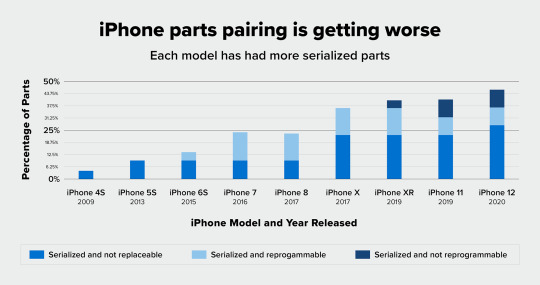
Every generation of Apple devices does more parts-pairing than the previous one, and the current models are so infested with paired parts as to be effectively unrepairable, except by Apple. It's so bad that iFixit has dropped its repairability score for the iPhone 14 from a 7 ("recommend") to a 4 (do not recommend):
https://www.ifixit.com/News/82493/we-are-retroactively-dropping-the-iphones-repairability-score-en
Parts-pairing is bullshit, and Apple are scum for using it, but they're hardly unique. Parts-pairing is at the core of the fuckery of inkjet printer companies, who use it to fence out third-party ink, so they can charge $9,600/gallon for ink that pennies to make:
https://www.eff.org/deeplinks/2020/11/ink-stained-wretches-battle-soul-digital-freedom-taking-place-inside-your-printer
Parts-pairing is also rampant in powered wheelchairs, a heavily monopolized sector whose predatory conduct is jaw-droppingly depraved:
https://uspirgedfund.org/reports/usp/stranded
But if turning phones into e-waste to eke out another billion-dollar stock buyback is indefensible, stranding people with disabilities for months at a time while they await repairs is so obviously wicked that the conscience recoils. That's why it was so great when Colorado passed the nation's first wheelchair right to repair bill last year:
https://www.eff.org/deeplinks/2022/06/when-drm-comes-your-wheelchair
California actually just passed two right to repair bills; the other one was SB-271, which mirrors Colorado's HB22-1031:
https://leginfo.legislature.ca.gov/faces/billNavClient.xhtml?bill_id=202320240SB271
This is big! It's momentum! It's a start!
But it can't be the end. When Bill Clinton signed DMCA 1201 into law 25 years ago, he loaded a gun and put it on the nation's mantlepiece and now it's Act III and we're all getting sprayed with bullets. Everything from ovens to insulin pumps, thermostats to lightbulbs, has used DMCA 1201 to limit repair, modification and improvement.
Congress needs to rid us of this scourge, to let us bring back all the benefits of interoperability. I explain how this all came to be – and what we should do about it – in my new Verso Books title, The Internet Con: How to Seize the Means of Computation.
https://www.versobooks.com/products/3035-the-internet-con


If you'd like an essay-formatted version of this post to read or share, here's a link to it on pluralistic.net, my surveillance-free, ad-free, tracker-free blog:
https://pluralistic.net/2023/09/22/vin-locking/#thought-differently

Image: Mitch Barrie (modified)
https://commons.wikimedia.org/wiki/File:Daytona_Skeleton_AR-15_completed_rifle_%2817551907724%29.jpg
CC BY-SA 2.0
https://creativecommons.org/licenses/by-sa/2.0/deed.en
--
kambanji (modified)
https://www.flickr.com/photos/kambanji/4135216486/
CC BY 2.0
https://creativecommons.org/licenses/by/2.0/
--
Rawpixel (modified)
https://www.rawpixel.com/image/12438797/png-white-background
#pluralistic#vin locking#apple#right to repair#california#ifixit#iphones#sb244#parts pairing#serialization#dmca 1201#felony contempt of business model#ewaste#repairwashing#fuckery
1K notes
·
View notes
Text
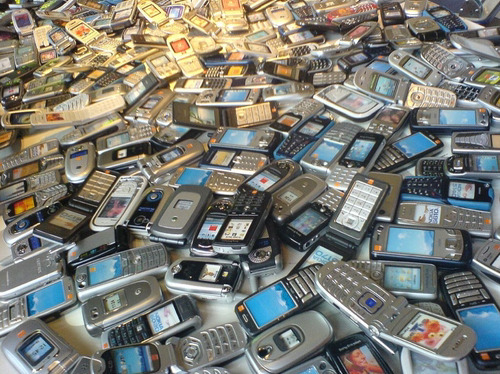
instagram: cheri.png
#I haven’t done a consumerism post in a while#I’m going to Milan for 11 hours tomorrow so it fits#consumerism#ewaste#digital waste#cybercore#old internet#old web#y2k#00s#2000s#cyber y2k#moodboard#tech#cyber core#techcore#technology#tech aesthetic#tech blog#early 2000s
587 notes
·
View notes
Photo

1K notes
·
View notes
Text
the story of fairphone
18 notes
·
View notes
Text

The Life Cycle of a Mobile Phone
Having trouble reading infographic here?
Check out the full size infographic at - https://allrecyclingny.com/the-life-cycle-of-a-mobile-phone/
16 notes
·
View notes
Text
CRT Rescue
Just last week I learned that a recycling center near a city I visit was closing down and had over a dozen pallets of CRTs to get rid of. I made arrangements with the owner to stop by on a weekend date. I was especially interested in seeing “IBM terminals” having heard there were about 30 there. Working in the e waste industry myself, it was refreshing to just dive in there and take whatever without looking crazy or violating any regulations. Just the week before about a dozen people came in nerding out over tube TVs. Working in BTB e-waste and being a retro computer nerd is a bad combo, one that is tough on my mental health.
I was also the only person connected with the local Free Geek who could make it so they gave me a shopping list.

I only had an hour to look so I focused on the IBMs. I would learn that IBM at the time used a proprietary “twinax” cable and that these displays could not be connected to anything other than an IBM mainframe. I was able to put together the last two complete units with logic boards. I was disappointed I couldn’t have a VGA ready green 80’s monitor for free, but fortunately I was later told that there were a lot of local IBM mainframe fans around who’d be happy to take them.
I also found a generic TTY terminal from Renyolds and Renyolds with the classic white cursor.

I found a large office paper shredder with a very vintage look that is going to be perfect for Precious Plastic activities through Second Melt, probably the most useful and practical find.
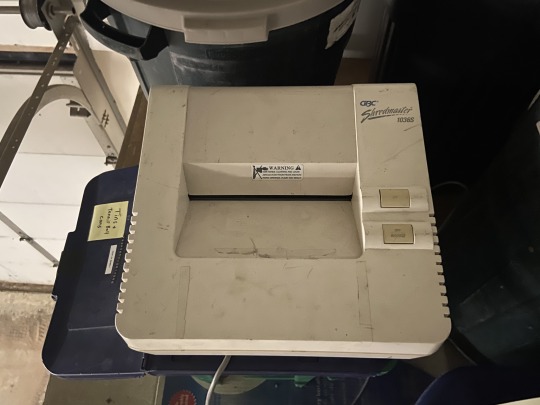
I noticed a large all in one terminal with a mechanical keyboard wedged into a box and decided to turn it on. Fortunately it didn’t blow up but the screen did not do anything. I was hesitant but I decided to grab it for its case and keyboard. If I can’t get it working it will be a great case for when I build my WarGames inspired evil AI.


It is a General Terminal Corporation GTC-100 terminal dating to the early 80’s. After doing some digging I found that it is “teletype compatible” and workable with a USB to 25 pin serial adapter. This one’s a keeper and I’m going to try and restore it.
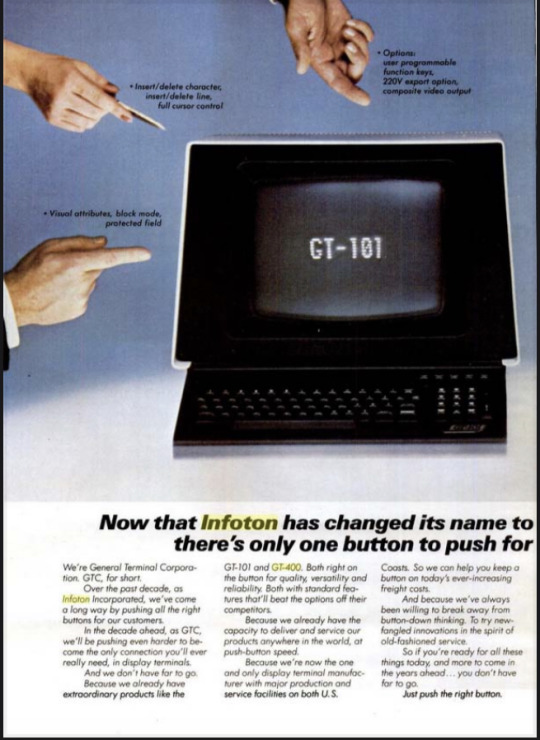
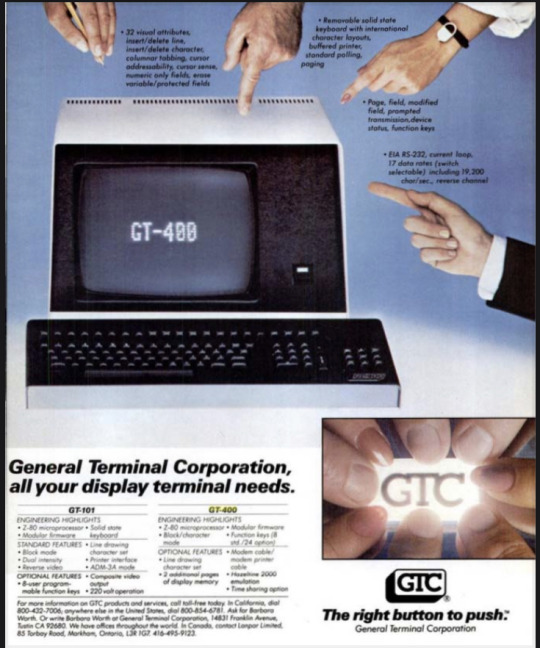
At the last second I grabbed an armful of 9 track IBM tapes, also for donating to the local Free Geek. I’ll keep one for display purposes.

Regretfully I wish I had spent more time there and probably won’t get back— the place has to be cleared out by years end. But I’m empowered I was able to same some stuff to distribute to like minded folks entirely on my own volition. I’m excited to get the terminal working and expect a post, possibly two on that.

#vintage#retro computing#retro gaming#crt monitor#crt tv#1980s#1980s nostalgia#80’s#80s aesthetic#retro aesthetic#ibm#ewaste#e-waste
6 notes
·
View notes
Text
The per transaction costs of bitcoin is an even more alarming statistic. The transaction statistics from aggregated chain data indicate the bitcoin network is performing 326,140 transactions per day or 119,041,100 transactions per year. The per transaction energy cost is 2077.54 kWh, or the equivalent to the power consumption of an average US household over 75.67 days. Comparatively, the Visa network can perform 100,000 transactions for 151 kWh, and a single transaction takes 0.002 kWh.
The yearly carbon output of this energy consumption is quantifiable as a percentage of power derived from fossil fuel emissions, and the bitcoin network is estimated to emit 51.9 megatons of carbon dioxide annually. A single bitcoin transaction alone produces 270 kg of CO2.
On top of the carbon footprint and energy waste, every single data center running computer hardware to perform useless proof of work computations emits a steady stream of e-waste in discarded graphics cards, ASICs, and servers. Each of these chips contains an abundance of heavy metals and carcinogens such as lead, cadmium, mercury, and chromium that are dumped straight into the landfill after being discarded. The annual e-waste of the bitcoin network amounts to all the cell phones, laptops, tablets, and computers of every person in the Netherlands put together. A single transaction on the bitcoin network amounts to the amortized destruction of 2.29 iPhones.
Popping the Crypto Bubble
66 notes
·
View notes
Text
It seems that Zorin OS 17 finally fixed compatibility issues with a third-party Cirrus Audio driver that caused certain MacBook models to have no audio, so now my mid-2017 MacBook Pro 13-inch can have a modern, updating, OS that gets new features and active development.
Apple sold this laptop, new, until 2019 (which is when I bought mine, none-the-wiser), and they discontinued support in 2023 with the release of macOS Sonoma 14. I'll be damned if I let a 4-year-old laptop get turned into eWaste, though.
I had previously wiped the SSD and installed Windows 11 because of the aforementioned issues with the audio drivers. Now that I can have audio, though, this computer lives on as Linux machine, as it's 2011 15-inch counterpart does.
#rambles#zorin#zorin os#zorin os 17#macbook#macbook pro#2017 macbook pro#apple#fuck apple#macos#ewaste#software#update#software update#planned obsolescence#linux#tech#technology#computer#computers#laptop#laptops
5 notes
·
View notes
Text
Impact of E-Waste on Human Health and the Environment
Have you ever wondered what happens to your old electronics when you don't need them anymore? It's important to know about electronic waste or e-waste and how it affects us and the planet.

What is E-Waste?
E-waste is what we call old electronic stuff like phones, computers, and gadgets that people throw away. For detailed guides on E-Waste visit our blog What is E-Waste Recycling? and Why It’s Important
Why Is E-Waste a Problem?
E-waste is a big problem all over the world. Every year, there is more and more of it. This is not good for our health and the environment.
Health Problems
E-waste has dangerous things inside, like lead and mercury. When these things get into our food and water, they can make us sick. Breathing in bad air from burning e-waste is also harmful.
Harm to the Environment
When we don't recycle e-waste, it piles up in big garbage places. This takes up a lot of space and can hurt the land and animals. Also, our electronics have special metals inside that we can use again, like gold and silver. If we don't recycle them, we waste these important things.
What Can We Do?
There are things we can do to help with e-waste:
Use E-Waste Recyclers: E-waste recyclers are people or companies who take our old electronics and make them into new things.
Learn About E-Waste Recycling: There are different ways to recycle e-waste, and it's good to know about them.
Recycling Types: E-waste can be recycled in different ways. Some parts can be used again, and some can be turned into new things.
Let's all do our part to take care of our old electronics and keep our planet clean and healthy.
For a more in-depth exploration of this critical issue, visit our blog Impact of E-Waste on Human Health and the Environment or explore our website, E-Waste Mart.
#tech waste#e waste recycling#electronic waste#epr#e waste#e waste management#ewaste#epr services#recycling#effect of e waste#effect of electronic waste#waste management
2 notes
·
View notes
Text
Prometheus Recycling for Ewaste Recycling solution in India company Scrap reuse
Prometheus Recycling is a leading ewaste recycling solution in India The company specializes in the safe and environmentally friendly disposal of electronic waste, such as computers, mobile phones, and other electronics. Prometheus Recycling takes a comprehensive approach to e-waste management, focusing on the three Rs: reduce, reuse, and recycle. Through their recycling efforts, the company helps to reduce the amount of electronic waste that ends up in landfills and helps to keep hazardous materials from entering the environment. In addition to their recycling services, Prometheus also offers educational programs to help raise awareness about the importance of e-waste recycling. With their commitment to sustainability and environmental protection, Prometheus Recycling is the best e-waste recycling solution in India. Visit https://www.prometheusrecycling.com/ to know more about us.
2 notes
·
View notes
Text
How can recycling e-waste save the environment?
Recycling e-waste, or electronic waste, can save the environment in several ways. First, it can reduce the amount of toxic materials that end up in landfills. Many electronic devices contain hazardous materials such as lead, mercury, and cadmium, which can leach into the environment and harm human health and wildlife. By recycling e-waste, these materials can be safely removed and disposed of, reducing the risk of contamination.
Additionally, recycling e-waste can conserve natural resources. Many electronic devices contain precious metals such as gold, silver, and copper, as well as other valuable materials like plastic and glass. By recycling these materials, they can be recovered and used to create new products, reducing the need to extract new resources from the earth. This not only conserves resources but also reduces the environmental impact of mining and manufacturing new materials.
Furthermore, recycling e-waste also helps to reduce carbon emissions. The production of new electronic devices requires a significant amount of energy, which contributes to greenhouse gas emissions. By recycling old devices and using the recovered materials to make new products, we can reduce the need for new manufacturing and lower carbon emissions.
Finally, recycling e-waste also helps to create jobs and stimulate local economies. E-waste recycling facilities, and companies that refurbish and resell used electronics, provide job opportunities and stimulate economic growth.
In conclusion, recycling e-waste is crucial in protecting the environment, conserving natural resources, reducing carbon emissions and providing jobs. It is important for individuals to be mindful of their electronic devices, reduce their e-waste, and properly dispose of old devices through recycling programs.
2 notes
·
View notes
Text
Do you know the E-Waste Management Rules 2016?
Watch this video carefully and learn more to Click here.
https://bit.ly/3EAjG8I
#ewaste#recycling#electronicwaste#ewasterecycling#recycle#industrialwaste#itrecycling#metalscrap#officebin#sustainability#reuse#environment#waste#wastemanagement#circulareconomy#computerrecycling#electronics#laptoprecycling#Rekart#sustainable#sustainabledevelopment#ecofriendly#ewastecompanyinindia
2 notes
·
View notes
Photo
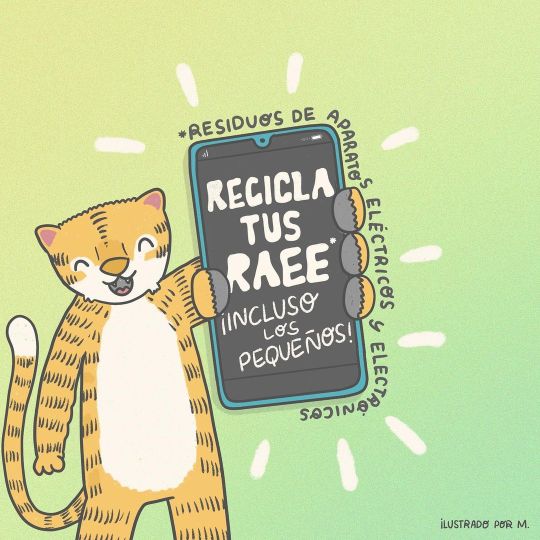
Por el día internacional de los residuos de aparatos eléctricos y electrónicos #RAEE quería hablar un poco sobre ellos. Reciclarlos significa rescatar materia prima que puede volver a ser utilizada para hacer más tecnología, de este modo ahorrando recursos. Y por su misma naturaleza, no reciclarlos y botarlos al ambiente implica la liberación de sustancias tóxicas ☠️ Todo debería apuntar a que los reciclemos, pero lo que en verdad hacemos es guardarlos en un cajón y olvidarnos, se calcula que la persona promedio guarda 5.5kg de RAEE en casa 🤦🏻♀️ Así que si estás buscando reciclar ese control remoto, audífono, cargador o hasta televisor (aquí yo, culpable), averigua si hay campañas municipales para hacerlo o revisa la lista de locales que ofrece el @minamperu en su web. Es importante reciclar los RAEE, ¡incluso los pequeños! Hay que mantenerlos lejos del ambiente 📱🌿 #ewaste #raee #ambiente #infografia #ilustración #weeeforum #internationalewasteday (en Lima - Perú) https://www.instagram.com/p/Cjsn96brTvk/?igshid=NGJjMDIxMWI=
1 note
·
View note
Photo
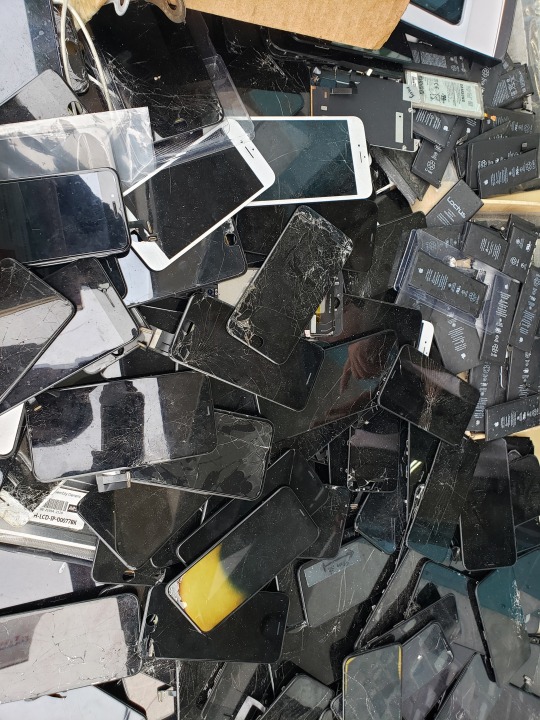
268 notes
·
View notes
Text





Join us as we continuously procure transformer cores aluminum winding scrap for sustainable recycling. If you have stocks available, let's make a deal! Contact us via: WhatsApp: +85260669186 WeChat: +8613923192733 Line: +66972500948 Email: [email protected]
#TransformerCoresScrap#AluminumWinding#aluminiumscraprecycling#autopartsscraprecycling#automobilerecycling#cclscrap#circuitboardscrap#compressorscrap#compressorscraprecycling#computerscrap#computerscraprecycling#ewaste#electricmotorscrap#electricmotorscraprecycling#electricalscrap#electricalscraprecycling#electronicrecycling#harddiskscrap#harddiskscraprecycling#metalrecycling#metallicscraprecycling#meterscraprecycling#motorscrap#motorscraprecycling#professionalscraprecycling#recycler#scrapappliance#scrapautoparts#scrapmetalrecycling
0 notes